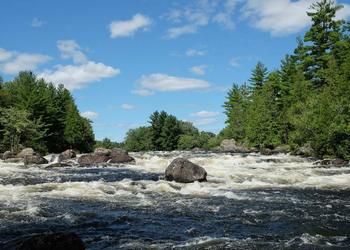
WASHINGTON, DC, December 5, 2016 (ENS) – Obama Administration critics are urging President-elect Donald Trump to test the limits of presidential executive power by revoking national monuments established by President Barack Obama. No president has revoked a national monument created by his predecessor, so such an historic move would trigger a legal battle over this frequently used environmental protection.
This would essentially be a battle over extraction of natural resources such as coal, oil and gas or uranium.

National monuments are not open to new natural resources extraction. However, where a valid claim had been identified before designation, those minerals may be mined so long as such mining does not cause unnecessary or undue degradation, according to the U.S. Bureau of Land Management.
But roads, power lines, or pipelines cannot be constructed in national monuments, except where such construction would meet the purpose for which the area was designated.
Critics say Obama has abused presidential power in using the 1906 Antiquities Act to withhold large stretches of land and sea from energy exploration.
In total, President Obama has to date designated 23 national monuments, more than any other president.
If Trump attempts to free up land for drilling, mining or any other purpose by vacating national monuments, he likely would spark a legal case that ultimately would end up before the Supreme Court, said William Perry Pendley, president of the nonprofit Mountain States Legal Foundation.
“I think President Trump has plenty of power to vacate the illegal actions of President Obama with regard to those monument decrees,” Pendley told the “Washington Times” newspaper.
Congress has traditionally played a large role in the creation, abolition and conversion of national monuments, but gridlock during the Obama Administration has forced Congress to forfeit its part in these issues, according to a new analysis posted today by Public Employees for Environmental Responsibility, PEER.
The PEER lawyers say that in contrast to the legal certainty flowing from Congressional action, calls for a President Donald Trump to revoke prior national monumental proclamations “would lead to lengthy litigation, paralysis and no certain outcome.”
“Having a President Trump take the unprecedented step of trying to unilaterally revoke monuments is guaranteed to trigger lawsuits that will likely remain unresolved during his tenure,” concluded PEER Executive Director Jeff Ruch, an attorney.
Ruch said that even if a presidential monument proclamation is rescinded, it is unclear whether the presidential withdrawal of these lands from drilling and mining remains in effect.
“Congresspersons who bellyache about national monuments set aside for the American people over the last generation have only themselves to blame for abdicating the constructive and dynamic role in national monuments played by past Congresses,” said Ruch
“Over the decades, Congress has played a major role in what national monuments were created, changed and, in some cases, revoked but this important dimension has largely fallen into disuse,” said PEER Board Chairman Frank Buono, a former career National Park Service manager who assembled historical research on the origin and evolution of monuments.
“While Congress has abolished presidentially-created monuments, no president ever has and, unlike Congress, it is a wide open legal question whether he can,” said Buono.
The analysis details Congress’ past robust involvement with monuments, including that –
• Nearly one-third (27 of 83) of the extant national monuments inside the National Park System were created by acts of Congress, rather than by a presidential proclamation. Nor has Congress shied away from creating large national monuments, such as El Malpais National Monument in New Mexico which covers 114,276 acres of varied landscapes;
• Besides park system national monuments, Congress created at least one BLM-administered national monument, Prehistoric Trackways in New Mexico. Congress also created four Forest Service national monuments, Misty Fjords and Admiralty Island in Alaska, and Mt. St. Helen’s in Washington, and Newberry Crater in Oregon;
• Congress has abolished several national monuments created by presidential proclamations, including Fossil Cycad (South Dakota) (1956), Lewis and Clark Cavern (Montana) (1937), Papago Saguaro (Arizona) (1930), Shoshone Cavern (Montana) (1954) and Verendrye (North Dakota) (1956); and
• Congress abolished another 52 national monuments by incorporating their land into National Parks, National Historical Parks, National Preserves or other units.
“No President has ever abolished or revoked a national monument proclamation, so the existence or scope of any such authority has not been tested in courts,” said Ruch. “However, some legal analyses since at least the 1930s have concluded that the Antiquities Act, by its terms, does not authorize the President to repeal proclamations, and that the President also lacks implied authority to do so.”
Copyright Environment News Service (ENS) 2016. All rights reserved.
© 2016, Environment News Service. All rights reserved. Content may be quoted only with proper attribution and a direct link to the original article. Full reproduction is prohibited.
